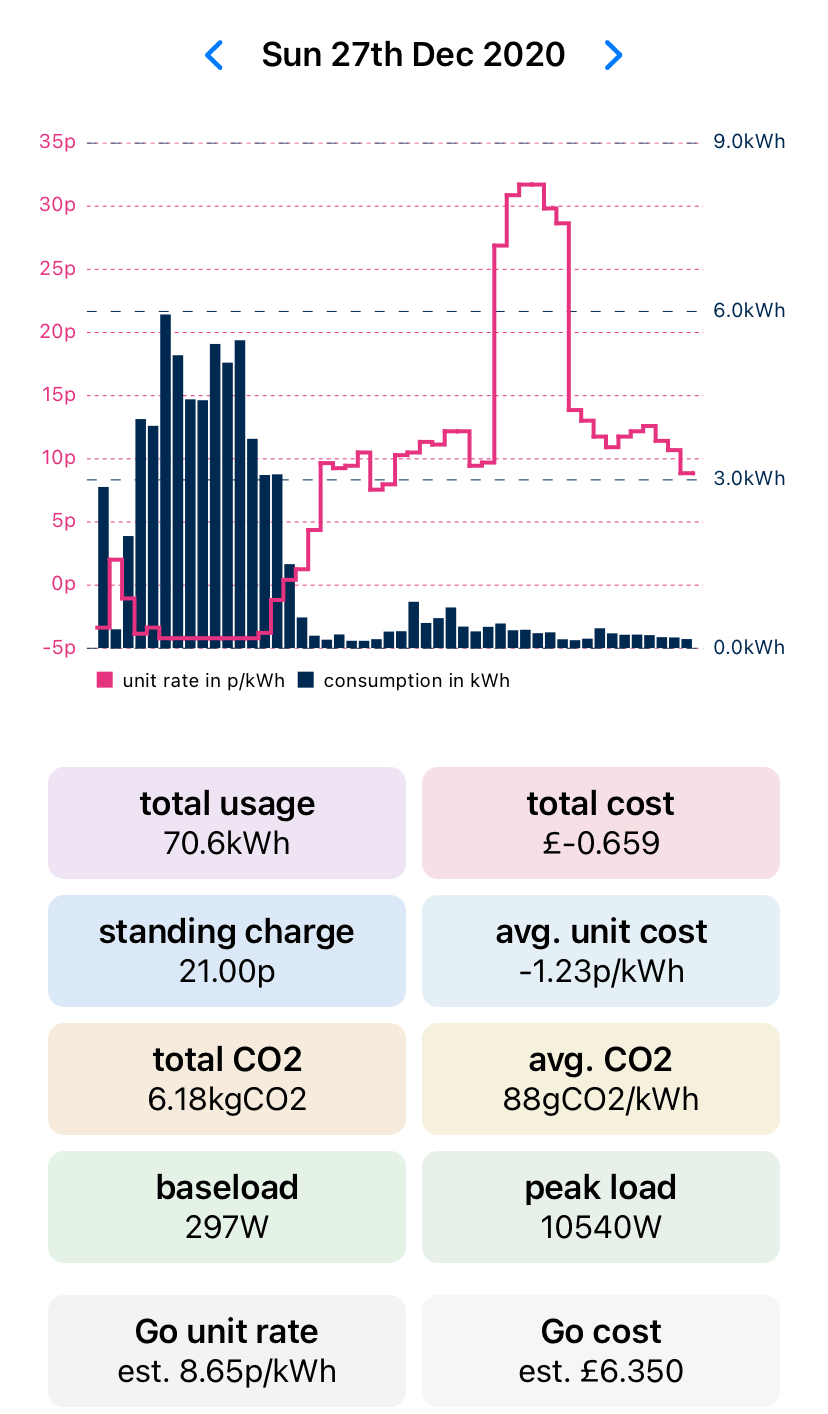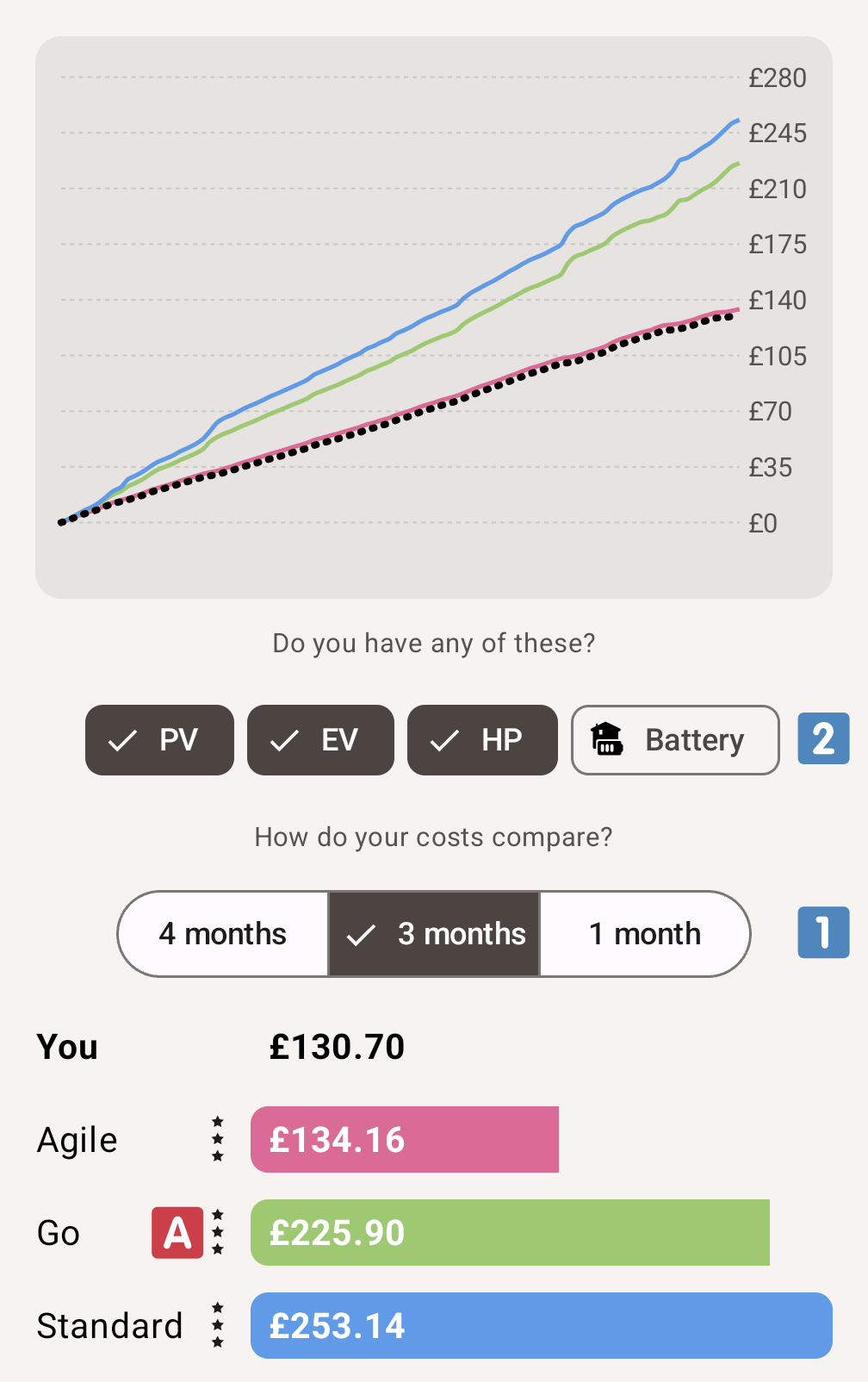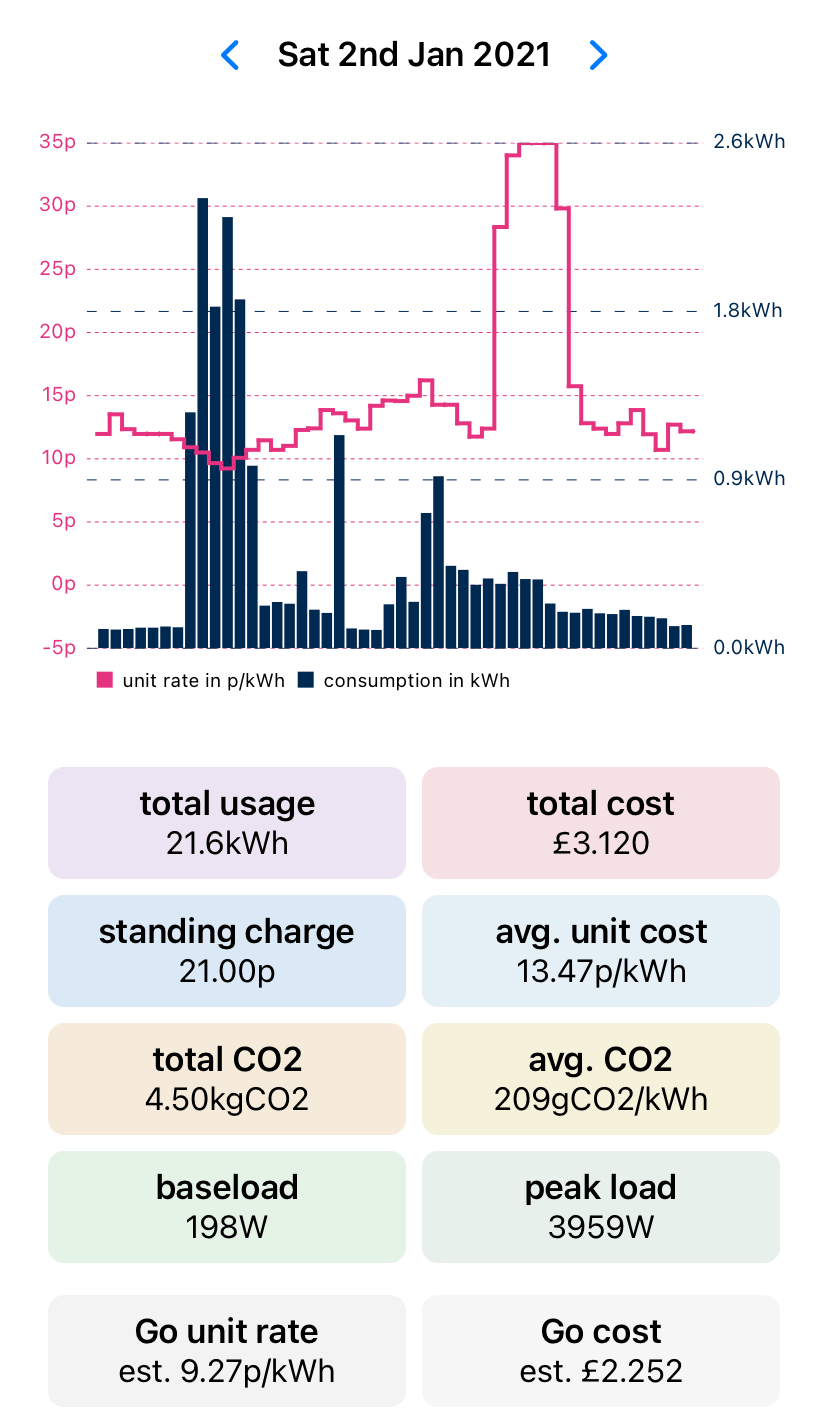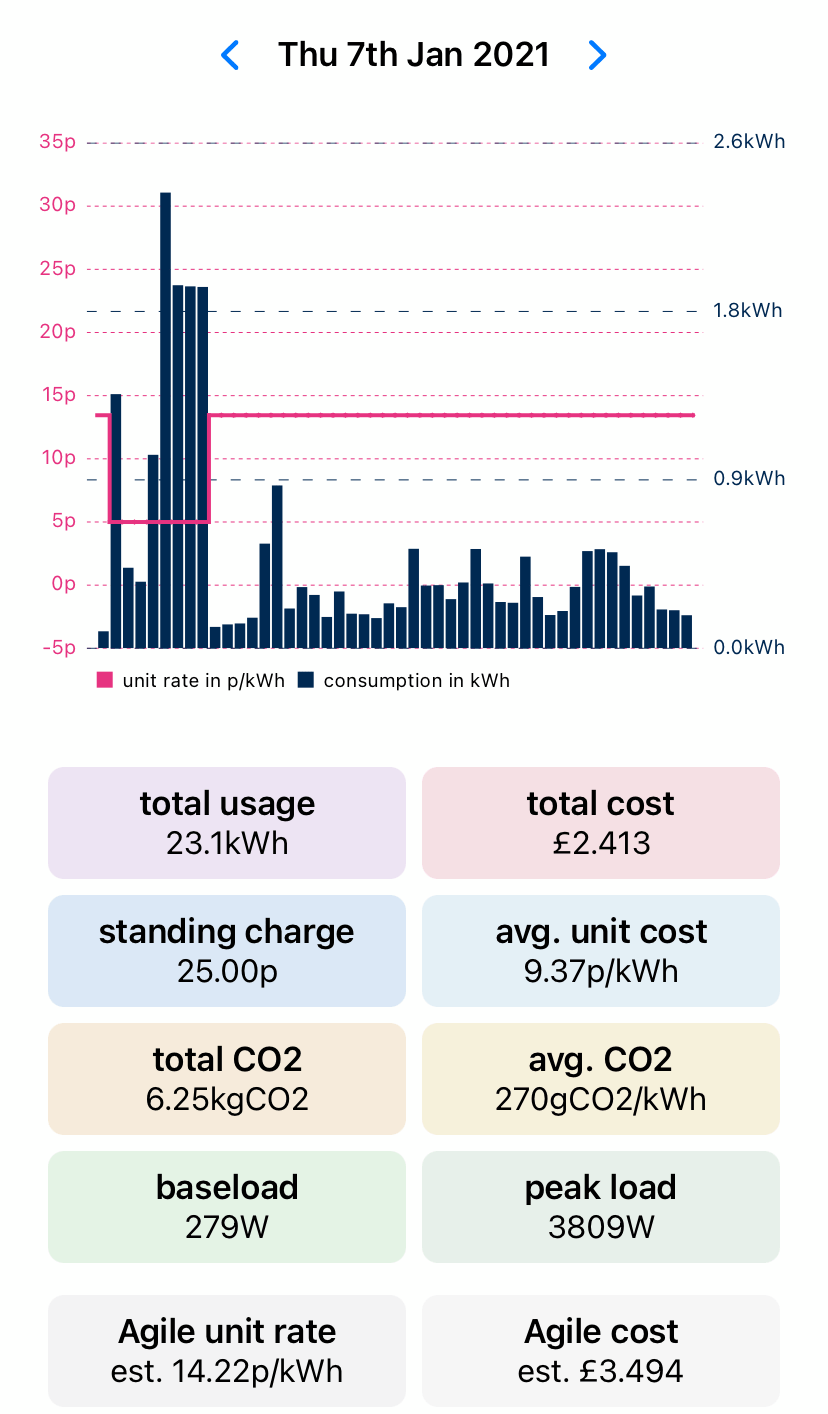Smart Compare
The Smart Compare feature in Octopus Watch allows you, with just a single tap, to see how much you are saving versus other import tariffs.
Users of the basic version of the app can compare their costs against Agile, (plain) Go, and the Standard Variable Rate (SVT). Subscription users can compare against Agile, Tracker, Go, Flux, Cosy, and SVT.
Using Compare
The Compare screen is designed for ease of use. Open it and you instantly get the results for the last 3 months of usage. You’ll get a chart plotting your costs on various tariffs, and the legend below shows you the estimated costs on each tariff.
The comparison feature only compares import tariffs.
You can customise the range of the comparison to the last month, the last three months, or the last four months. If you’re a subscriber, the last option is instead for a full year comparison. Octopus Energy imposes requirements on which tariffs you can join. To make this easy the app allows you to select the energy-related equipment you have
, and will only show tariffs applicable to you. Select if you have solar panels (PV), an electrical vehicle (EV, with home charging), a heat pump (HP), or a home battery. You instantly get the results.
The comparison always tracks the latest product code for a tariff. This means that any tariff you are on might show as cheaper than the same tariff. This is because, over time, Octopus Energy changes product codes, and new product codes often come with higher costs. Even if you have been on <Agile> for a full year you can still beat <Agile> as you will have locked in e.g. a lower standing charge than more recent versions of <Agile>. This applies to all tariffs, although at this time only Agile, Tracker, and SVT are fixed 12 month tariffs.
Smart Compare
Octopus Watch can often apply a smart comparison which takes time of use into account. Octopus Watch intelligently detects which usage you can move around and which usage is fixed. Based on these calculations the app reworks your usage pattern to match how you would behave differently when you changed tariff. The smart comparison does have a couple of requirements. You cannot have export, and it only works if you are on a smart tariff. When you have export the app can only see your usage at your property line which means that it has incomplete information on your usage. Smart compare would make mistakes if it tried to use this information. Instead, Octopus Watch prides itself on accuracy and switches to a lower quality, but higher accuracy, direct comparison. A similar issue is at hand for dumb tariffs, such as a fixed rate. These tariffs do not give time-of-use information, i.e. they don’t tell how flexible you are with your energy use.
Octopus Watch self-reports on the quality of each comparison. A star rating is assigned to each tariff which ranges from one star (dumb hour-by-hour comparison) to three stars (fully able to take time of use into account). If over the comparison period you have been on different tariffs then the comparison adapts accordingly and may show two stars when it was only partially capable of taking time of use into account.
How good is this comparison tool in Octopus Watch? Judge for yourself. In the two screenshots below you can see two days with roughly the same total and peak usage. The estimated Go rate is at the bottom of the Agile screenshot (2nd Jan) and can be verified against the effective Go rate (7th Jan). Wondering why the predicted Agile rates on the 7th don’t match up with the actual ones on the 2nd? This is because Agile prices change every day and the unit rate shown is for the Agile prices on the 7th of January (prices were indeed higher on 7th Jan on Agile).
Because of its intelligent approach, Octopus Watch is also not thrown off when it comes to plunges on Agile. Plunges happen, yet should not dramatically affect the estimations of how much you would pay on other tariffs. In most cases and for most users this is indeed the case. Plunges, where you consume an atypical amount of electricity, indeed only have a minor impact on the final estimates:

You can disable smart compare on the Compare screen. If you disable smart compare the app uses a dumb hour-by-hour comparison instead.
Using Compare with Intelligent
Both Intelligent and Intelligent Go are not supported as Octopus Energy doesn’t make the information available to correctly calculate their costs. However, with some knowledge, the Compare tool can be used to determine if Intelligent is the right tariff for you.
I’m using Intelligent like Go
If you’re using Intelligent as if you are on a Go tariff, and only use the overnight cheap rates, then the comparison will be accurate. There are no additional steps needed.
I’m using Extra Dispatch Times
If you’re using extra dispatch times outside of the normal overnight hours then Octopus Watch will overestimate your cost on Intelligent. Only you know how much you are saving from these extra dispatches. If your comparison is lower than any other tariff then Intelligent is definitely the right tariff for you. If some tariffs are estimated to be lower you’ll need to sit down and work out if the extra dispatches compensate for the estimated savings on another tariff.
Disclaimer
Whether or not to switch tariffs remains a personal decision. Octopus Watch helps by estimating how much you would end up paying on another tariff. Always verify for yourself whether a switch is worth it. Keep in mind that Octopus Energy has various restrictions for switching and (re)joining tariffs. At any time the comparison is given without warranty.


